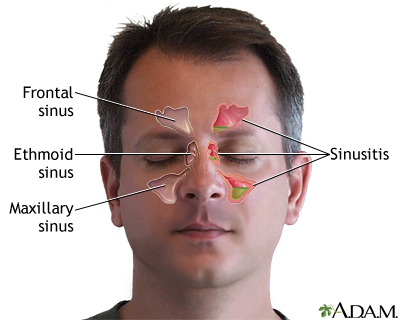Sinusitis Types and Causes

There are four types of sinusitis, and you should know the differences. Short-term sinusitis means the infection lasts for less than 12 weeks, while long-term sinusitis means that you experience the same infection more than three times in a year. There are two primary types of sinusitis: acute and chronic. Both are caused by infections that are caused by mucus and are temporary. Acute sinusitis is an occasional occurrence, while subacute sinusitis is a recurrent condition. The sphenoid and frontal nasal cavities develop in the early teens, and both are affected by the same infection.
The symptoms of acute sinusitis can last four weeks or less, while those from chronic sinusitis can persist for three months or longer. Acute sinusitis may be caused by bacteria, fungus, or viruses. Chronic sinusitis may involve inflammation in the eye socket, which can cause vision problems or even blindness. In severe cases, recurrent acute or chronic infection of the nose can also cause serious complications, including inflammation of the brain or spinal cord, bone infection, or skin infections.
The common causes of acute and chronic sinusitis include respiratory tract infections, allergies, and smoking. Inflammation from allergies can cause an infection to spread to the sinuses and can even affect vision. If left untreated, this condition can lead to the resulting infections, including bone damage and permanent vision loss. You should see a doctor for a proper diagnosis before you start using over-the-counter medicines. However, over-the-counter medications for acute or chronic sinusitis can cause dependency and addiction.
Sinus infections are the most common cause of acute and chronic sinusitis. However, other health conditions can also cause this condition. If the infection is not treated properly, sinusitis can develop into a secondary infection caused by respiratory bacteria that thrive in blocked sinuses. If a primary sinus infection does not go away, it can become a secondary one. In this case, the diagnosis of sinusitis must be made before it becomes a secondary infection.
Some people can treat acute bacterial sinusitis on their own. However, some require visiting a specialist. These specialists can help determine the cause of the disease. For example, a CT scan can reveal the presence of a virus. Some patients can treat bacterial sinusitis with over-the-counter medications. Although antibiotics can be used for bacterial or viral infections, they rarely cure sinusitis.

If the cause of the infection is unclear, you may need to have a CT scan. Scans can be performed using X-rays and computer technology to produce axial or horizontal images. Images may show the entire inside of the sinuses. A CT scan can provide detailed images of the sinuses, so it is important to clean the device frequently. It is also important to follow your doctor’s instructions and the recommendations on the health website adshome.in.th.
The most common type of sinusitis is acute. Acute sinusitis usually affects the maxillary sinus and is caused by bacteria, dust and air pollution. Other types include bacterial and viral infections, and they may be asymptomatic. Infected sinuses can usually be treated with antibiotics and decongestants, but some may require surgery to enlarge the sinuses. There are many different causes of acute and chronic sinusitis.
As far as causes of acute sinusitis are concerned, the most common is bacterial sinusitis. This type usually occurs after a cold or flu, and symptoms may occur as the infection resolves. If you’ve had bacterial sinusitis, you may be able to find out what caused it and how to prevent it. Although bacterial sinusitis is more common than bacterial sinusitis, it can still be very painful and affect breathing.
Acute sinusitis is a short-term illness that occurs right after a cold. Recurrent acute sinusitis, on the other hand, is more chronic and is more likely to last longer than acute. The most common types of bacterial sinusitis are recurrent, with the former lasting less than one week and recurrent in more than three years. So, what is acute sinusitis?
Acute sinusitis is characterized by acute pain that occurs in the face and neck. Acute sinusitis is more severe and will lead to a full-blown infection. If you suffer from chronic sinusitis, your doctor will prescribe an antibiotic to treat it. Then, you’ll be prescribed the appropriate treatment. It’s best to be as comfortable as possible, as it’s essential to relieve your symptoms.